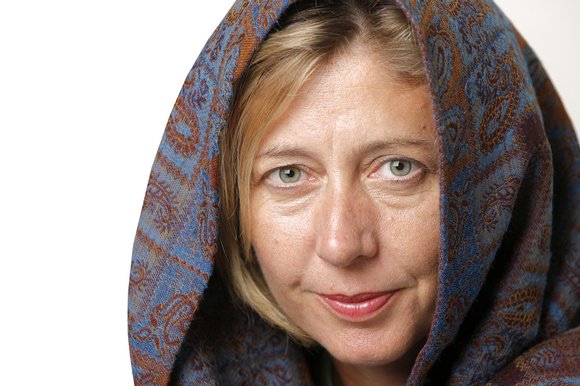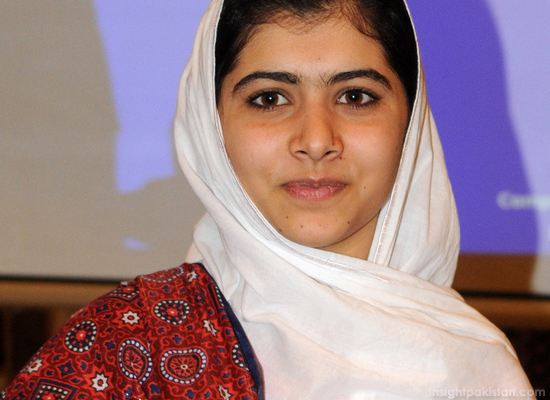In Her Own Words
By Zehra Nabi | Bookmark | Published 12 years ago
In a bid to complete reading I am Malala before the Eid holidays, I found myself carrying the book with me everywhere I went, and one of those places turned out to be a salon. Surrounded by women getting their manicures done and hair blow-dried, I managed to quietly read a few chapters of Malala Yousafzai’s memoir, which details her life in Swat and the events leading up to the Taliban’s attempt to assassinate her last year in October. However, just as I was about to leave the salon with my mother, a middle-aged woman seated near us pointed at the photograph of Malala on the cover and asked, “Tell me what you think of her.”
She didn’t really wait for my answer though and instead launched a diatribe against Malala and her father: “Parading in front of the West…what has she done after all…the father just wants money…” She went on and on.
This is the conundrum 16-year-old Malala faces. As much as people around the world admire the teenager for standing up to the Taliban, there are a sizable number of Pakistanis who harbour a deep disdain for her that even the most maligned politicians sometimes don’t attract.
Why do so many Pakistanis — seemingly liberal, well-educated Pakistanis — hate a teenager who advocates equal education for girls? What bothers us when individuals — women specifically — don’t let tragedies silence them and instead use them to galvanise public awareness about human rights violations? And why are we more concerned about Pakistanis supposedly airing dirty laundry abroad than about how the proverbial dirty laundry is amassing into an impossible pile in the country?
These are not questions directly answered in the book, but after reading it some of Malala’s detractors may just be won over by her story. I am Malala traces her family history and, in particular, her father Ziauddin Yusafzai’s struggles to found a school, before going on to detail the Talibanisation of the Swat Valley. While many of us have read about ‘Radio Mullah’ or about public floggings in the papers, for Malala and her family these were living realities. She succinctly writes, “First the Taliban took our music, then our Buddhas, then our history” and brings to life the fear the extremists induced in the lives of ordinary people. Popular boardgames such as carrom were banned, televisions and computers were burned en masse and the ski resort in Malam Jabba was bombed. Massage parlours were raided, musicians were sent death threats and schools forcibly shut down.
Ziauddin Yusafzai, an outspoken critic of the Taliban, began to attend press conferences and meet with journalists, and he took his oldest child, Malala, along with him everywhere. It was only a matter of time that the intelligent and confident young girl came to the attention of foreign correspondents from the BBC and The New York Times and subsequently, in 2009, she started writing a diary for the BBC under the pseudonym of Gul Makai.
 ‘Diary of a Pakistani Schoolgirl,’ which can be read on the BBC website, describes how girls secretly attended schools in plain clothes instead of in uniform and the sense of uncertainty regarding the future of education in Swat. What is not included in the diary entries, but is in the book, are the frequent (but thankfully brief) chronicles of Pakistani politics and history.
‘Diary of a Pakistani Schoolgirl,’ which can be read on the BBC website, describes how girls secretly attended schools in plain clothes instead of in uniform and the sense of uncertainty regarding the future of education in Swat. What is not included in the diary entries, but is in the book, are the frequent (but thankfully brief) chronicles of Pakistani politics and history.
It is safe to assume that Malala, who was born in 1997, did not write, “The Russian invasion transformed Zia from an international pariah to the great defender of freedom in the Cold War.” Such descriptions can be attributed to British journalist Christina Lamb, who co-wrote the book. Perhaps these authorial interjections are necessary to provide context about Pakistan for a wider audience but they prove problematic as they dilute Malala’s voice. In a second-person narrative these contextualising paragraphs may have worked, but in the first-person narrative of I am Malala, a co-writer seems unwarranted.
 It is safe to assume that Malala, who was born in 1997, did not write, “The Russian invasion transformed Zia from an international pariah to the great defender of freedom in the Cold War.” Neither did she write, “On 17 June 2004, an unmanned Predator dropped a Hellfire missile on Nek Mohammad in South Waziristan apparently while he was giving an interview by satellite phone.” As much as Malala may be interested in politics (“[I] sat on my father’s knee listening to everything he and his friends discussed”), the descriptions of the Lal Masjid siege during Musharraf’s reign or of Zulfikar Ali Bhutto’s hanging can be attributed to British journalist Christina Lamb, who co-wrote the book. Perhaps these authorial interjections are necessary to provide context about Pakistan for a wider audience but they prove problematic as they dilute Malala’s voice. In a second-person narrative these contextualising paragraphs may have worked, but in the first-person narrative of I am Malala, a co-writer seems unwarranted.
It is safe to assume that Malala, who was born in 1997, did not write, “The Russian invasion transformed Zia from an international pariah to the great defender of freedom in the Cold War.” Neither did she write, “On 17 June 2004, an unmanned Predator dropped a Hellfire missile on Nek Mohammad in South Waziristan apparently while he was giving an interview by satellite phone.” As much as Malala may be interested in politics (“[I] sat on my father’s knee listening to everything he and his friends discussed”), the descriptions of the Lal Masjid siege during Musharraf’s reign or of Zulfikar Ali Bhutto’s hanging can be attributed to British journalist Christina Lamb, who co-wrote the book. Perhaps these authorial interjections are necessary to provide context about Pakistan for a wider audience but they prove problematic as they dilute Malala’s voice. In a second-person narrative these contextualising paragraphs may have worked, but in the first-person narrative of I am Malala, a co-writer seems unwarranted.
And it is Malala’s voice — wise beyond her years, yet still a teenager at heart — that makes the book worth reading. The Taliban, for instance, are described as “strange-looking men with long straggly hair” and, a fan of Twilight, she compares them to vampires who appear in the middle of the night. She jokes about her chemistry teacher calling her a born politician as she would begin the oral exams with the proclamation, “Sir, can I just say that you are the best teacher and yours is my favourite class.” She also describes a trip to Islamabad with her fellow classmates and laments how she missed the chance to eat duck pancakes at a Chinese restaurant since she had to be on Hamid Mir’s widely watched news show Capital Talk. As much a fan of the American comedy show Ugly Betty as of Stephen Hawking’s popular science book A Brief History of Time, Malala emerges in the memoir as a confident and somewhat precocious girl who dares to dream big — not a saintly figure who is difficult to relate to.
But for most readers, the most fascinating part of the book will be where Malala describes getting shot by a Talib and her days in the hospital following the ordeal. Only the heartless would be left unmoved by her matter-of-fact description of how the school-van she was riding with her friends was stopped by men demanding, “Who is Malala?” or of how her younger brother Atal was inconsolable when he finally visited her in the hospital. Her sense of alienation while getting treatment in England, far removed from her family who were still stuck in Pakistan thanks to bureaucratic delays, is emphasised through small incidents. Unaware that people from around the world had rallied around her, she innocently asked the British doctors who would pay for her treatment and even worried about the cost of calling her family back home. As her health improved, the well-meaning hospital staff bought her jeans and t-shirts, not realising that she would be uncomfortable in the clothes.
Those who believe the conspiracy theories surrounding Malala should closely read the passages in which she describes how Colonel Junaid, a surgeon of the Pakistan army, removed a piece of her skull because of the excessive swelling of her brain and of the many months it took Malala to be able to move the left side of her face again. They should read carefully when Malala reveals how the house the family has moved into in Birmingham “feels big and empty” and with its electric iron gate makes them feel they are under house-arrest. She writes about the sense of loneliness the family feels, far removed from friends and loved ones back in Pakistan, and how in her new school she is viewed as Malala the activist, as opposed to just another classmate who loves to tell jokes and draw pictures.
While the world is divided between those who deride Malala and those who deify her, I am Malala reminds us that she is still just a girl. And that is what makes her courageous actions and words all the more admirable.
Zehra Nabi is a graduate student in The Writing Seminars at the Johns Hopkins University. She previously worked at Newsline and The Express Tribune.


